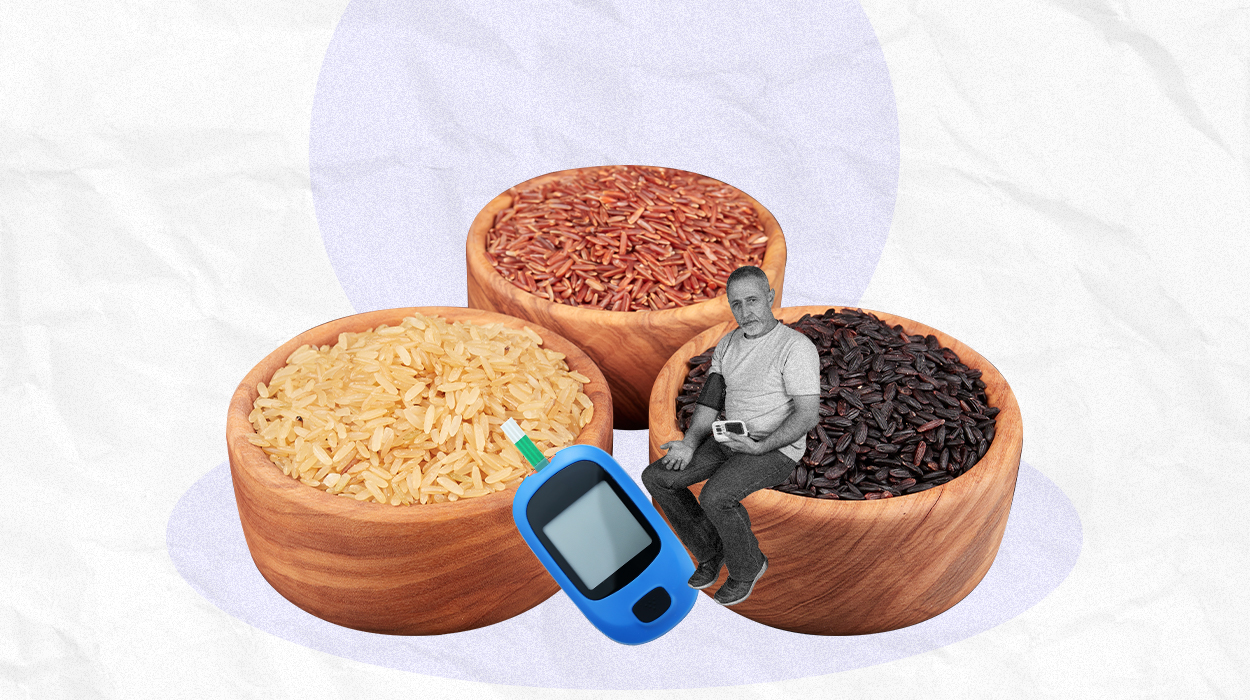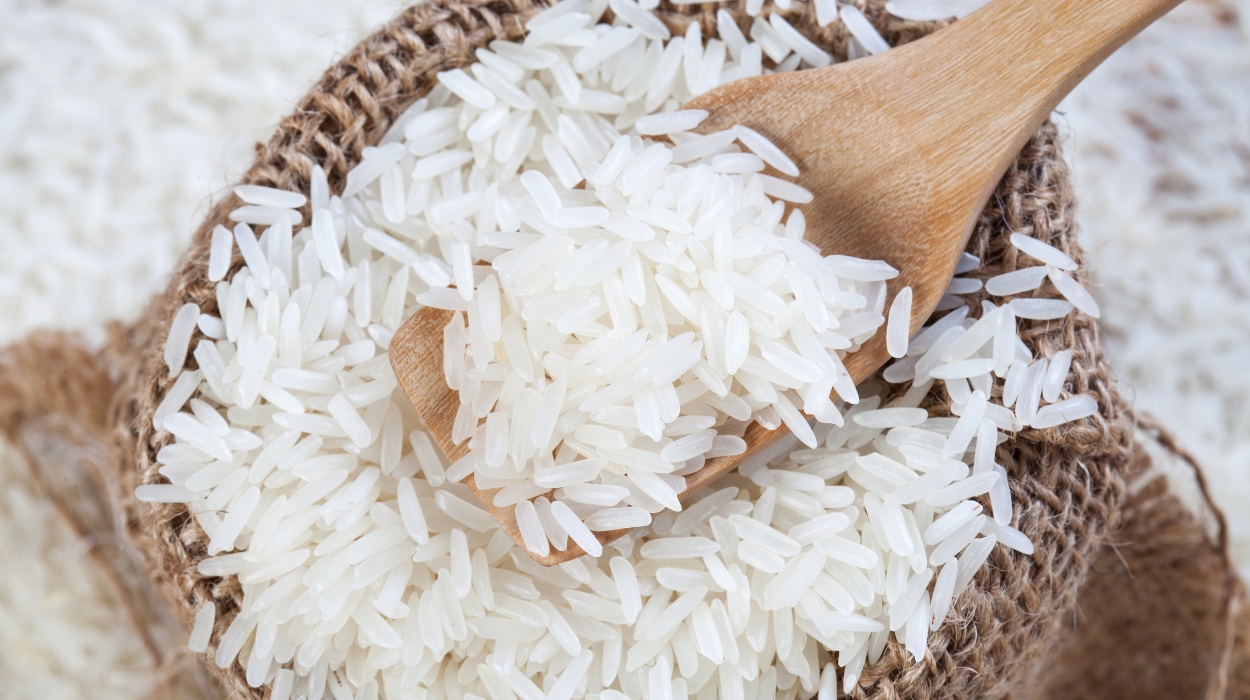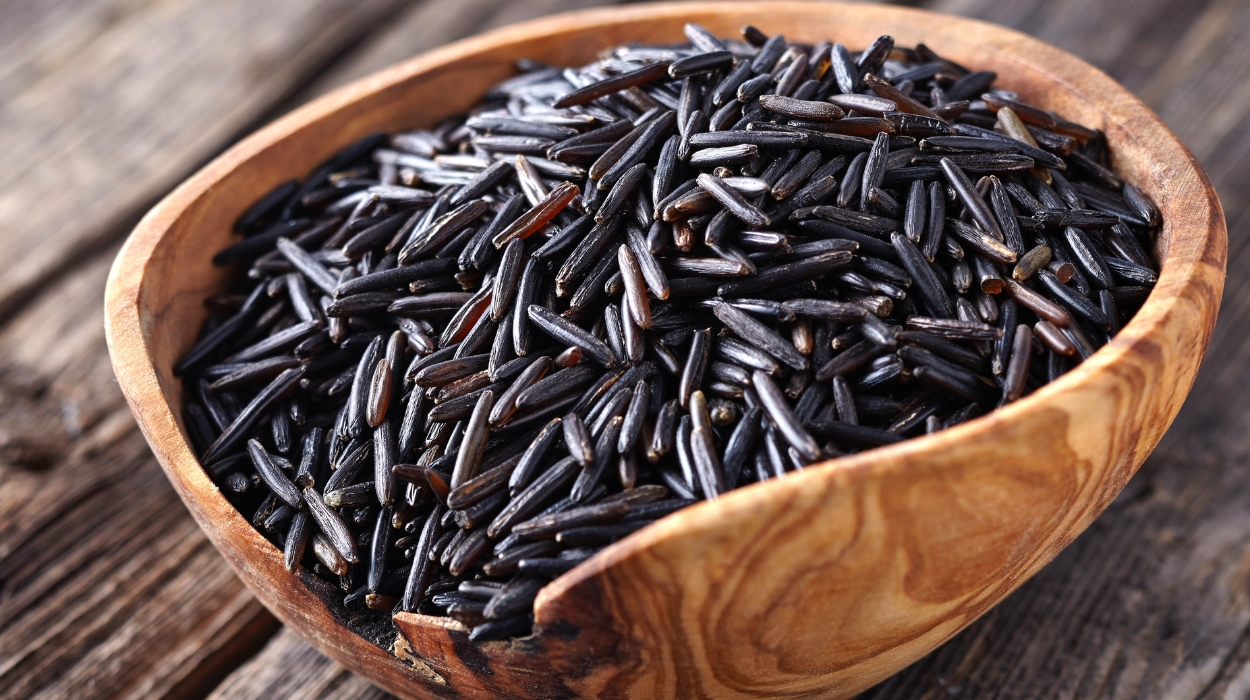 Expert's opinion
Expert's opinion
Expert's opinion
The article is a subjective view on this topic written by writers specializing in medical writing.
It may reflect on a personal journey surrounding struggles with an illness or medical condition, involve product comparisons, diet considerations, or other health-related opinions.
Although the view is entirely that of the writer, it is based on academic experiences and scientific research they have conducted; it is fact-checked by a team of degreed medical experts, and validated by sources attached to the article.
The numbers in parenthesis (1,2,3) will take you to clickable links to related scientific papers.
Is Rice Good For Diabetes? Our Essential 2024 Guide

Rice is a staple food for millions of people worldwide, and its impact on diabetes has been a topic of ongoing discussion. So, is rice good for diabetes? Identifying whether rice can be part of a healthy and balanced meal plan for people with diabetes is essential in managing blood sugar levels effectively. Let’s look at healthy rice options and ways to incorporate them into your diabetes diet.
Can People Who Have Diabetes Eat Rice?
White rice has a high glycemic index, so it’s not always ideal for people with diabetes. However, other rice alternatives, such as brown rice and wild rice, are more advisable and may have less of an impact on your blood glucose levels.
Is Rice Good For Diabetes?
Is rice good for diabetics? The answer is not entirely straightforward.
The type of rice and portion size play crucial roles in determining if it’s appropriate for your specific dietary requirements. Be mindful of portion sizes, and pair your rice dishes with proteins, healthy fats, and non-starchy vegetables to prevent spikes in your blood sugar. You may also consider substituting rice with healthier low-carbohydrate options like cauliflower rice or quinoa when possible.
Nutritional Value Of Rice
When considering the nutritional value of rice and its impact on diabetes, it is essential to differentiate between white rice and brown rice. Both types of rice have distinct properties, which may affect diabetes in different ways.
White Rice

White rice is refined with its outer bran layers and germ removed, leaving only the starchy endosperm. As a result, white rice has a higher glycemic index[1] than brown rice, which means it is more likely to cause sudden blood sugar spikes after consumption. White rice has a glycemic index of about 73 on a scale of 0-100, with glucose being 100, and is considered a high-glycemic food.
So, is white rice good for diabetes? It can be eaten in moderation, but, as we’ll discover, several healthier options exist.
Brown Rice
On the other hand, brown rice is a whole grain that retains its nutrient-rich bran and germ layers. Consequently, it has a lower GI[1] than white rice and can help maintain more stable glucose levels. With a glycemic value of about 50, it is a low-glycemic choice.
Which Rice Is Good For Diabetes?
When choosing the best rice for diabetes, it’s important to understand the various types available and their impact on your blood sugar levels.
So, what rice is good for diabetes?
Brown Rice
Brown rice is considered a good, healthier option for people with diabetes due to its higher fiber content.[1] The presence of fiber in brown rice can help slow down the absorption of carbohydrates, resulting in a lower glycemic index. Trials have shown it impacts weight loss and LDL-cholesterol levels,[2] and research has shown it is associated with a lower risk of type 2 diabetes[3] than white rice.
Basmati Rice
Basmati rice, particularly the whole-grain version, can be healthy for people with diabetes. Whole-grain basmati rice has a lower glycemic index than white basmati rice, making it a better option for blood sugar management.
Wild Rice

Wild rice, a seed from a grass species rather than a true rice variety, is another good option for diabetes. It is rich in nutrients and has a lower glycemic index than most other rice varieties, making it suitable for those with diabetes. Its glycemic index is about 57, similar to that of oats, making it a medium-glycemic food.
Black And Yellow Rice
Yellow rice is a good choice for people with diabetes, as is black, as it contains more beneficial nutrients than white rice. However, it’s crucial to keep portion sizes in mind, as even healthier rice varieties can significantly raise blood sugar levels if consumed in large quantities.
In summary, brown rice, whole-grain basmati, wild rice, black rice, and yellow rice can be suitable options for people with diabetes. And, of course, white rice can also fit into a healthy eating pattern. Just remember to watch your portion sizes and select whole-grain options whenever possible. Portion sizes in the exchange list for diabetes are 1/3 cup of freshly cooked rice per starch serving.
How To Cook Rice For Diabetes?
When you want to maintain balanced blood sugar levels, choosing the right type and preparation of rice is crucial. For diabetes, it’s best to opt for whole grain rice varieties such as brown rice or black rice, as they have a lower glycemic index and contain more fiber than white rice. Here’s how to cook rice for diabetes in a healthy way.
- First, place the rice in a fine mesh strainer and run cold water over it, gently stirring it until it is clear. This removes surface starch, which could raise the glycemic index of your cooked rice.
- When cooking your rice, use a ratio of one cup of rice to two cups of water. This ensures that the rice won’t be gummy and reduces its glycemic index. Bring the water to a boil, add the rice, and reduce the heat to a simmer. Let it cook for 30-40 minutes for brown rice or 40-50 minutes for black rice. Make sure to keep the lid on the pot while cooking.
- Finally, once your rice has fully cooked, remove it from the heat and let it sit for a few minutes with the lid still on. This allows the rice to steam, further enhancing its texture and flavor. Fluff the rice with a fork and transfer it to a serving bowl.
- Also, consider cooking your rice a day in advance. Research has shown that allowing your rice to cool for 24 hours[4] before reheating it can increase the resistant starch and lower your glycemic response. Resistant starch is not digested and passes out of your digestive tract without absorption.
Following these steps, you can prepare a healthier, whole-grain rice dish more suitable for managing your diabetes.
Other Rice Alternatives For People With Diabetes
Fortunately, other grains can be more suitable for diabetes.
Quinoa
When considering grain alternatives, quinoa can be an excellent choice for those with diabetes. This nutrient-packed grain is high in protein and fiber, which can support blood sugar management.[5] You can use quinoa as a substitute for rice in various diabetes-friendly recipes. Its low glycemic index makes it a great diabetes-friendly grain.
Barley
Barley is another whole grain that can be used as an alternative to rice. Barley has a low glycemic index[6] and is rich in soluble fiber that can help regulate blood sugar levels. Incorporating barley into your diet is a great way to diversify your meal options while managing your diabetes.
Incorporating these rice alternatives into your diet can make a significant difference in managing diabetes. You can better control your blood sugar levels and maintain a healthier diet by choosing lower glycemic index options. Remember to consult with your healthcare professional for personalized advice on managing diabetes through dietary changes or the use of supplements.
The Bottom Line
Regarding rice consumption and diabetes, making the right choices is essential. So what rice is best for diabetes? Brown rice is a healthier option for diabetic people due to its lower glycemic index and higher fiber content than short-grain white rice.
When eating rice products, keep portion sizes in mind. Overeating any rice can lead to weight gain, unstable blood sugars, and increase your risk of developing type 2 diabetes if you don’t have it already. Maintaining a balanced diet that includes a variety of whole grains, lean proteins, and fruits and vegetables can improve your overall health and keep your diabetes in check.
If you have questions about incorporating rice into your well-balanced diet, consider meeting with a registered dietitian nutritionist. They can discuss specific individual carbohydrate needs and help you with carbohydrate counting.
Frequently Asked Questions
Yes, rice intake can increase blood sugar levels as it contains carbohydrates, which are broken down into glucose in your body. The effect of rice on blood sugar levels depends on the type of rice and its glycemic index.
Black rice is a good, healthier option for people with diabetes compared to white rice. It has a lower glycemic index. However, it is still a source of carbohydrates, so you should consume it in moderation.
Basmati rice, specifically brown basmati rice, can be a better option for people with diabetes than white rice. Brown basmati rice has a lower glycemic index, meaning it can help maintain steadier blood sugar levels when consumed in controlled portions.
Jasmine rice generally has a higher glycemic index (60-109) than other types of rice, which means it can cause a more rapid increase in blood sugar levels. Instead, consider opting for lower GI rice varieties, such as brown or black rice.
+ 6 sources
Health Canal avoids using tertiary references. We have strict sourcing guidelines and rely on peer-reviewed studies, academic researches from medical associations and institutions. To ensure the accuracy of articles in Health Canal, you can read more about the editorial process here
- Nayar, S. and Sri Venkata Madhu (2020). Glycemic index of wheat and rice are similar when consumed as part of a North Indian mixed meal. Indian Journal of Endocrinology and Metabolism, [online] 24(3), pp.251–251. doi:https://doi.org/10.4103/ijem.ijem_4_20.
- Rahim, A., Mohd Noor Norhayati and Aida Maziha Zainudin (2021). The effect of a brown-rice diets on glycemic control and metabolic parameters in prediabetes and type 2 diabetes mellitus: a meta-analysis of randomized controlled trials and controlled clinical trials. PeerJ, [online] 9, pp.e11291–e11291. doi:https://doi.org/10.7717/peerj.11291.
- Yu, J., Balaji Bhavadharini, Tinajero, M., Jarvis, S., Khan, T.A., Vasudevan Sudha, Viren Ranawana, Amudha Poobalan, Bhupathiraju, S.N., Sun, Q., Willett, W.C., Hu, F.B., Jenkins, D., Mohan, V. and Malik, V. (2022). White rice, brown rice and the risk of type 2 diabetes: a systematic review and meta-analysis. BMJ Open, [online] 12(9), pp.e065426–e065426. doi:https://doi.org/10.1136/bmjopen-2022-065426.
- Sonia, S., Fiastuti Witjaksono and Rahmawati Ridwan (2015). Effect of cooling of cooked white rice on resistant starch content and glycemic response. PubMed, [online] 24(4), pp.620–5. doi:https://doi.org/10.6133/apjcn.2015.24.4.13.
- Salud, M., María Dolores Espinosa, Carlos García Santamaría, Javier, C., M. A. Gutiérrez García, Fulgencio Soto Méndez, Guillén, I., Luque-Rubia, A.J., Javier, F., Antonio Martínez Garrido and Francisco Javier López-Román (2017). Efecto del consumo de quinua (Chenopodium quinoa) como coadyuvante en la intervención nutricional en sujetos prediabéticos. Nutricion Hospitalaria. [online] doi:https://doi.org/10.20960/nh.843.
- Dorota Różańska, Katarzyna Mikoś and Bożena Regulska−Ilow (2020). Assessment of the glycemic index of groats available on the Polish food market. Roczniki Państwowego Zakładu Higieny. [online] doi:https://doi.org/10.32394/rpzh.2020.0101.



